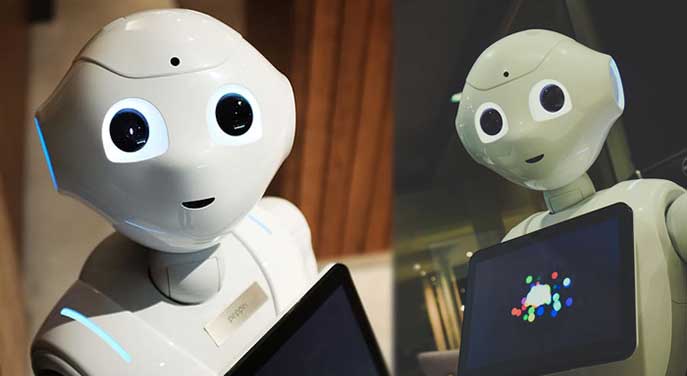Social robots that interact with humans could be a promising new addition to current treatment tools for people who stutter, according to a recent study looking at how the high-tech helpers might be used in clinics.

Torrey Loucks
Unlike apps and AI programs within computers, social robots have a physical presence, making them well suited for interventions in the context of a stuttering clinic, explains study co-author Torrey Loucks.
Stuttering affects the quality of life of those who experience the speech disorder, with effects extending beyond just speech difficulties, Loucks notes.
“Stuttering can further result in poor self-image, negative views that the person feels, and this leads to anxiety about engaging in speech communication.”
Interventions delivered by a speech-language pathologist make a huge difference in speech fluency and communication confidence.
“The gains in improving self-image and view of oneself as a competent communicator through effective therapy has really changed many people’s lives,” says Loucks, former research director at the Institute for Stuttering Treatment and Research (ISTAR) and former associate professor in the Department of Communication Sciences and Disorders at the University of Alberta.
Social robots have several advantages over other technological interventions that are commonly used. They excel at repetitive tasks, and are both programmable and adaptable to each patient’s specific needs. And research shows people prefer social robots over technology like tablets and smartphones, because their physical presence means they’re more interactive.
“There is a real opportunity for the social robot to make treatment activities more engaging and fun, particularly for younger clients.”
Loucks says robots won’t replace clinicians, but their affinity for repetitive tasks and programmable nature means they support the need for practice time and preliminary transfer tasks that are often limited in busy SLP clinics.
“There is a shortage of clinicians who are specialized in stuttering, so something that allows them to provide more practice and support to more clients will benefit the 300,000 Canadians who stutter.”
Though research on social robots and communication disorders is limited at this point, there are some promising results already, Loucks explains. For example, they’ve already proven beneficial at keeping autistic children engaged while promoting social skills such as turn-taking.
This research is the first to propose scenarios in which social robots are presented as tools to aid speech-language pathologists in modifying and refining interventions for people who stutter. The structured scenarios were created with input from stuttering researchers, speech-language pathologists and roboticists.
These scenarios are a fundamental step in introducing social robots into therapy, allowing researchers to determine whether the robots are having a beneficial effect while giving programmers the opportunity to refine the offerings the social robots are capable of providing, says Loucks.
“There is definitely growing interest and growing potential for social robots to supplement healthcare, and specifically rehabilitation.”
Loucks and his collaborators also surveyed Canadian clinicians with expertise in stuttering interventions to determine whether they had any concerns about bringing a social robot directly into the clinic.
“The clinicians were very open to the idea that a robot could supplement therapy activities by being an engaging partner.”
The types of social robots used in these scenarios aren’t a thing of the future — they’re already available. And though they’re a bit on the costly side now, gains in technology mean those costs are gradually coming down, says Loucks.
“A stuttering clinic offers potential to be a groundbreaking test case for social robots in speech & language treatments, both for supporting clinician-driven activities and also for allowing the client to practise some of their skills without the moment-by-moment participation of the clinician.”
| By Adrianna MacPherson
Adrianna MacPherson is a reporter with the University of Alberta’s Folio online magazine. The University of Alberta is a Troy Media Editorial Content Provider Partner.
The opinions expressed by our columnists and contributors are theirs alone and do not inherently or expressly reflect the views of our publication.
© Troy Media
Troy Media is an editorial content provider to media outlets and its own hosted community news outlets across Canada.


